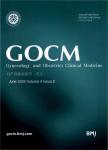Predicting risk of postpartum hemorrhage using machine learning approach:A systematic review
作者机构:Fertility and Infertility Research CenterHormozgan University of Medical SciencesBandar AbbasIran Department of Midwifery and Reproductive HealthTehran University of Medical SciencesTehranIran Mother and Child Welfare Research CenterHormozgan University of Medical SciencesBandar AbbasIran
出 版 物:《Gynecology and Obstetrics Clinical Medicine》 (妇产科临床医学(英文))
年 卷 期:2023年第3卷第3期
页 面:170-174页
学科分类:0710[理学-生物学] 12[管理学] 1201[管理学-管理科学与工程(可授管理学、工学学位)] 1002[医学-临床医学] 081104[工学-模式识别与智能系统] 08[工学] 100211[医学-妇产科学] 0835[工学-软件工程] 0811[工学-控制科学与工程] 10[医学] 0812[工学-计算机科学与技术(可授工学、理学学位)]
主 题:Postpartum hemorrhage Risk factors Machine learning
摘 要:Background Postpartum hemorrhage(PPH)could be avoided by identifying high-risk *** objective of this systematic review is to determine PPH predictors using machine learning(ML)*** This strategy included searching for studies from inception through November 2022 through the database included:Cochrane Central Register,PubMed,MEDLINE,EMBASE,ProQuest,Scopus,WOS,IEEE Xplore,and the Google Scholar *** search methodology employed the PICO framework(population,intervention,control,and outcomes).In this study,“Prepresents PPH populations,“Irepresents the ML approach as intervention,“Crepresents the traditional statistical analysis approach as control,and“Orepresents prediction and diagnosis *** quality assessment of each included study was performed using the PROBAST *** The initial search strategy resulted in 2048 citations,which were subsequently refined by removing duplicates and irrelevant ***,four studies were deemed eligible for inclusion in the *** these studies,three were classified as having a low risk of bias,while one was considered to have a low to moderate risk of bias.A total of 549 unique variables were identified as candidate predictors from the included *** distinct models were chosen as ML algorithms from the four *** of the four studies employed different metrics,such as the area under the curve,false positive rate,false negative rate,and sensitivity,to report the accuracy of their *** ML models exhibited varying accuracies,with the area under the curve(AUC)ranging from 0.706 to *** weighted predictors were identified as significant factors in PPH risk *** included pre-pregnancy maternal weight,maternal weight at the time of admission,fetal macrosomia,gestational age,level of hematocrit at the time of admission,shock index,frequency of contractions during labor,white blood cell count,pregnancy-induced hypertension,the weight of



